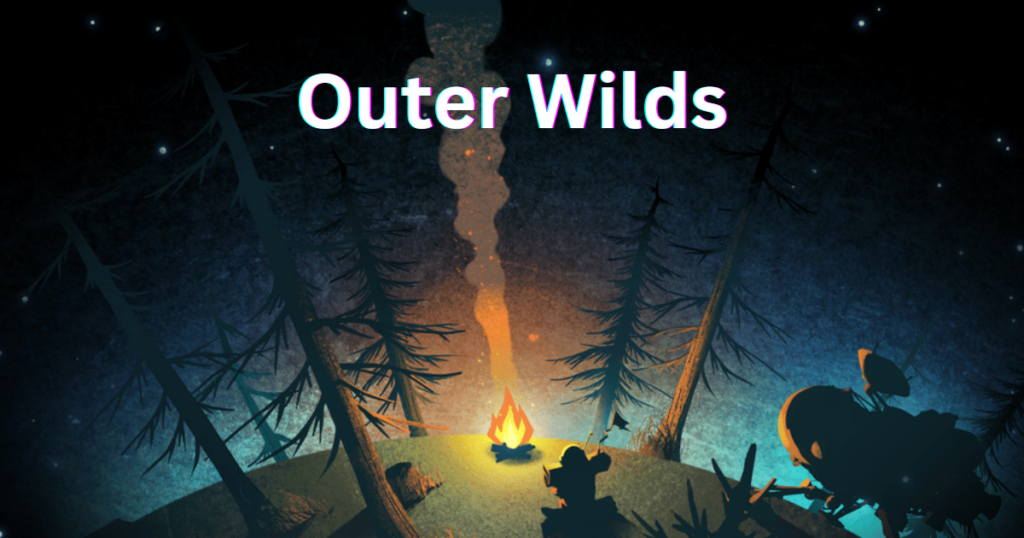
Hello everyone and welcome back to another blog post. Outer Wilds (not to be confused with The Outer Worlds) is an award-winning indie space exploration game developed by Mobius Digital and published by Annapurna Interactive. Released in 2019, it has since garnered critical acclaim for its innovative design, deeply immersive storytelling, and physics-based space exploration.
Unlike traditional open-world games, Outer Wilds doesn’t rely on combat or skill trees to engage players. Instead, it offers a solar system filled with mysteries, where knowledge—not leveling up—is the key to progress. This unique approach has earned it a passionate fanbase and a reputation as one of the most memorable gaming experiences of the past decade.
In this in-depth analysis, we’ll explore what makes Outer Wilds so special, its strengths and weaknesses, and why it remains a must-play for fans of exploration and narrative-driven games.
What Is Outer Wilds?
Outer Wilds is a first-person, open-world adventure game where you play as an astronaut from the Hearthian species, tasked with exploring a miniature, handcrafted solar system. The twist? The sun is about to go supernova in 22 minutes, resetting the universe in an endless time loop.
Unlike most games, progression isn’t tied to unlocking abilities or gear—instead, you uncover clues, decipher alien texts, and piece together the history of a long-lost civilization to solve the game’s central mystery.
Key Features:
- A Fully Simulated Solar System – Every planet orbits in real-time, with its own gravity, weather, and secrets.
- Nonlinear Storytelling – Discover the narrative in any order, with no set path.
- Knowledge-Based Progression – The only upgrades are the ones in your head.
- No Combat – The challenge comes from exploration, puzzle-solving, and survival.
Why Outer Wilds Stands Out
1. A Solar System That Feels Alive
Most open-world games rely on scripted events, but Outer Wilds operates on real physics. Planets rotate, sand shifts between worlds, and black holes warp space-time—all without loading screens. This creates an unparalleled sense of immersion.
Example: On Brittle Hollow, the planet’s crust slowly collapses into a black hole, forcing you to time your exploration carefully. Meanwhile, Giant’s Deep’s violent cyclones hurl islands into space. These aren’t just setpieces; they’re dynamic systems you must learn to navigate.
2. A Mystery That Rewards Curiosity
The game’s central loop revolves around uncovering the secrets of the Nomai, an ancient alien race that once inhabited the solar system. Each cycle, you gather new information—whether from ruins, scrolls, or environmental clues—that slowly reveals the truth behind the time loop.
Why It Works:
- No Hand-Holding – The game trusts players to connect the dots themselves.
- Satisfying Payoffs – Every discovery feels earned, leading to mind-blowing revelations.
- Encourages Experimentation – Dying (which happens often) is part of the learning process.
3. A Masterclass in Environmental Storytelling
Outer Wilds doesn’t rely on cutscenes or exposition dumps. Instead, its story is told through:
- Ruins & Architecture – Nomai structures hint at their culture and technology.
- Text Logs & Translations – Their writings reveal their hopes, fears, and mistakes.
- Sound & Music – The haunting soundtrack by Andrew Prahlow enhances every discovery.
This approach makes the world feel real and lived-in, rather than a mere backdrop for gameplay.
Potential Criticisms (A Balanced Look)
While Outer Wilds is widely praised, it’s not without flaws. Some players may find certain aspects frustrating or limiting.
1. The Time Loop Can Feel Restrictive
Since the game resets every 22 minutes, players who dislike repetition may find it tedious—especially if they die right before a major discovery. However, this mechanic is crucial to the story, reinforcing themes of inevitability and perseverance.
2. No Traditional Progression System
If you prefer RPG-style upgrades or skill trees, Outer Wilds might feel unsatisfying. Your progress is purely knowledge-based, meaning some players could hit walls if they miss key clues.
3. Some Puzzles Are Obscure
A few solutions rely on interpreting vague hints, which can lead to frustration. While most puzzles are brilliantly designed, a handful may require outside guidance.
Why Outer Wilds Is Worth Playing
Despite these minor drawbacks, Outer Wilds remains a landmark achievement in gaming. It’s a rare title that:
- Respects Player Intelligence – No quest markers, no forced tutorials.
- Delivers Emotional Depth – Its themes of curiosity, mortality, and legacy resonate deeply.
- Offers a Truly Unique Experience – No other game replicates its blend of exploration, physics, and storytelling.
Who Will Love It?
- Fans of Myst, The Witness, or Subnautica (atmospheric exploration games).
- Sci-fi enthusiasts who enjoy deep lore and existential themes.
- Players who appreciate games that prioritize discovery over combat.
Who Might Not Enjoy It?
- Those who prefer action-heavy or linear narratives.
- Players who dislike trial-and-error mechanics.
- Anyone frustrated by open-ended puzzles.
Final Verdict: A Must-Play for the Right Player
Outer Wilds isn’t just a game—it’s an experience. Its beautifully crafted solar system, intricate storytelling, and emphasis on pure exploration make it a standout title in modern gaming. While its unconventional design won’t appeal to everyone, those who embrace its mysteries will find one of the most rewarding adventures ever made.
If you’re looking for a game that challenges both your mind and your sense of wonder, Outer Wilds is an unforgettable journey worth taking.
Have You Played Outer Wilds?
What were your thoughts? Did the time loop enhance or hinder your experience? Share your favorite moments in the comments below! And don’t forget to check out the dev’s website here to learn more.
Niceee!